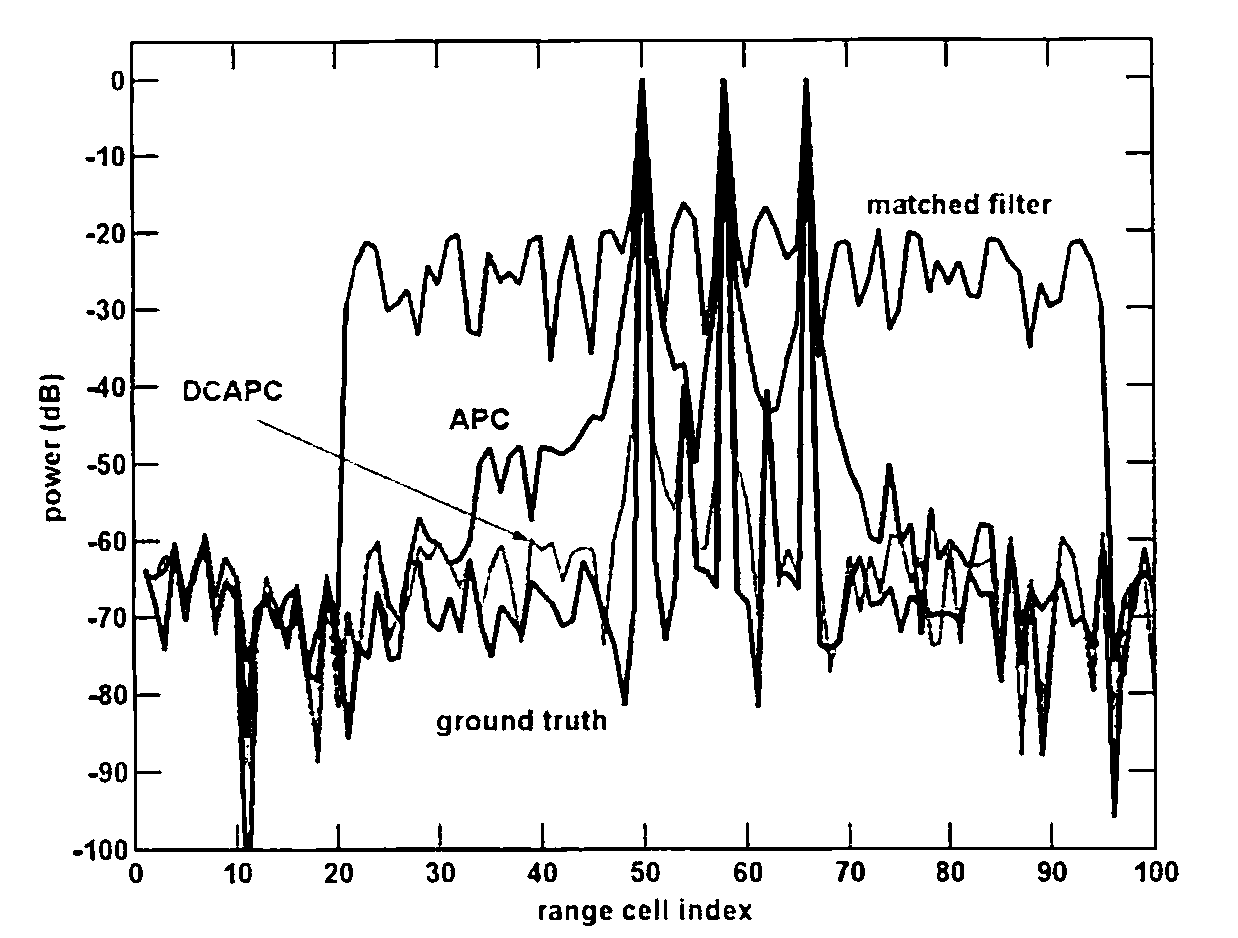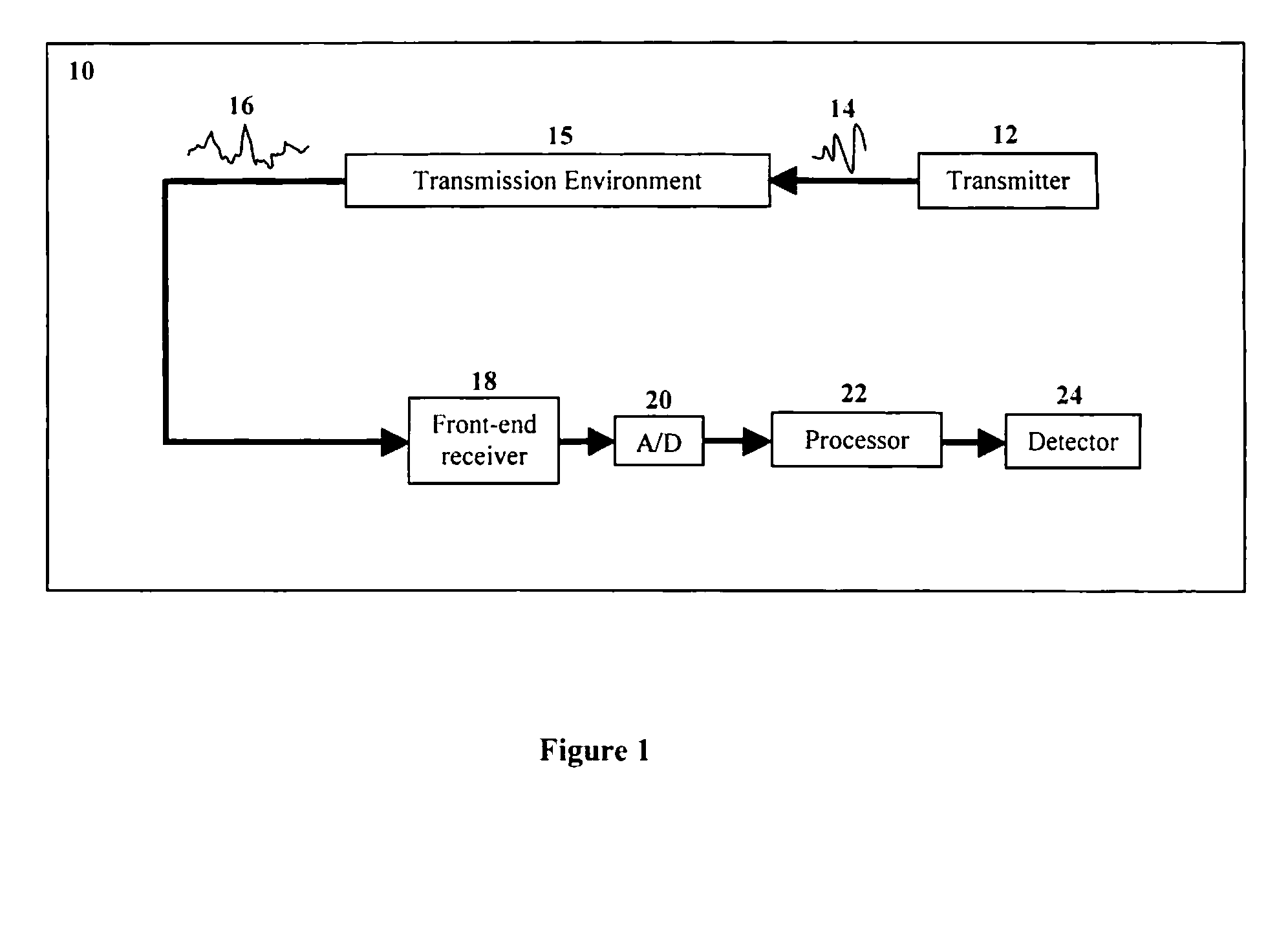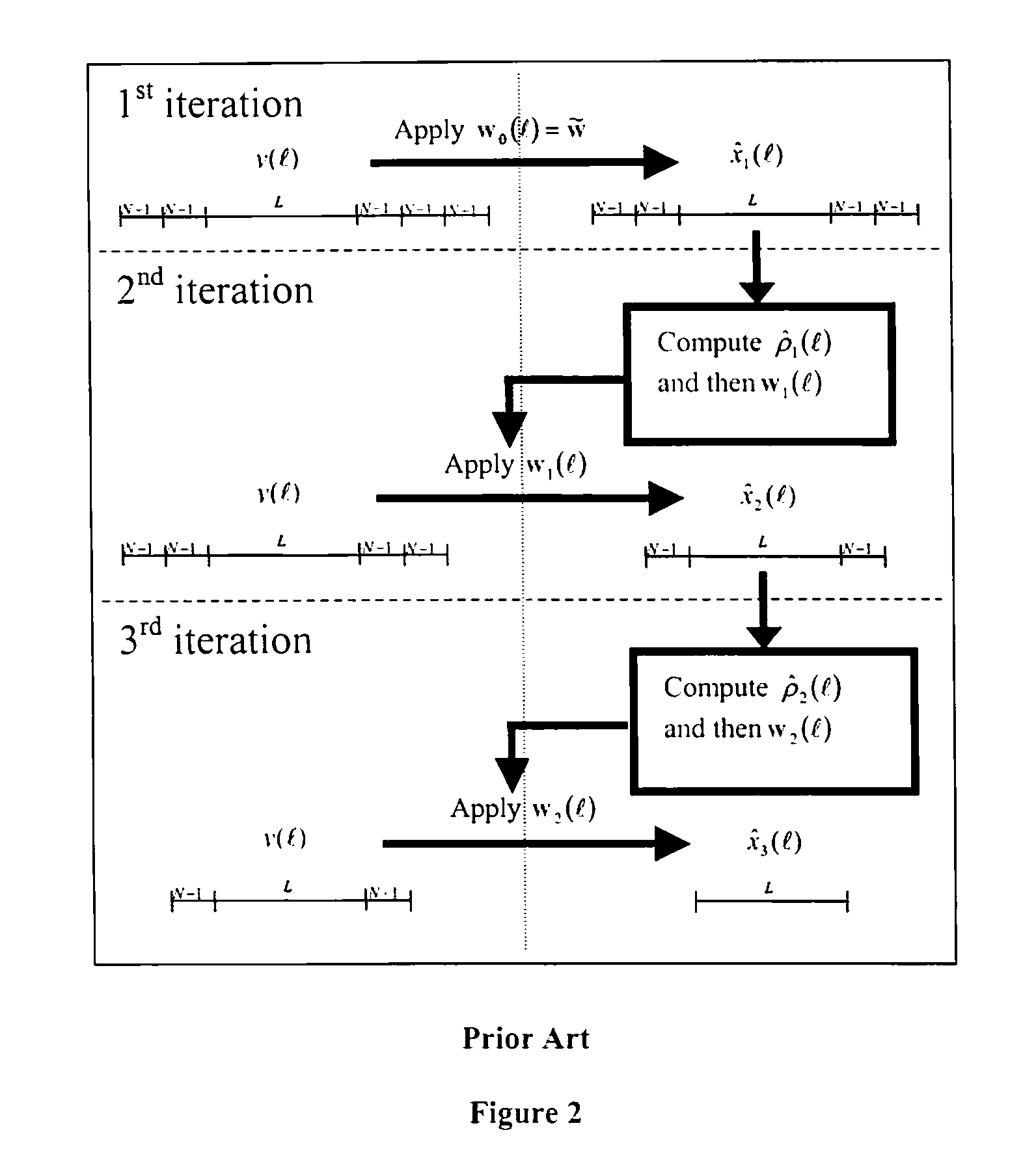Doppler-compensated radar pulse compression processing system and method
a pulse compression and processing system technology, applied in the field of radar processing methods and systems using adaptive pulse compression, can solve problems such as limiting radar sensitivity and apc degradation
- Summary
- Abstract
- Description
- Claims
- Application Information
AI Technical Summary
Benefits of technology
Problems solved by technology
Method used
Image
Examples
Embodiment Construction
[0017]Referring now to FIG. 1, an adaptive pulse compression with Doppler compensation radar processing system 10 includes a transmitter 12 for transmitting a modulated pulse (or waveform) 14, that upon interacting with its transmission environment's unknown impulse response 15 (to be estimated, as is described further below) forms a signal 16 that is a convolution of waveform 14 and impulse response 15, an analog front-end receiver 18 for receiving signal 16, an optional analog-to-digital (A / D) converter 20, a processor 22 having a computer readable storage medium, such as a hard drive, RAM, or the like, for processing analog or digital signal 16, and a detector 24. The processor 22 includes an adaptive pulse compression with Doppler compensation algorithm, as is described below.
[0018]The new Doppler Compensated Adaptive Pulse Compressor (DCAPC) is based upon a minimum mean-square error (MMSE) formulation. We denote the discrete-time version of the transmitted waveform as the vecto...
PUM
 Login to View More
Login to View More Abstract
Description
Claims
Application Information
 Login to View More
Login to View More - R&D
- Intellectual Property
- Life Sciences
- Materials
- Tech Scout
- Unparalleled Data Quality
- Higher Quality Content
- 60% Fewer Hallucinations
Browse by: Latest US Patents, China's latest patents, Technical Efficacy Thesaurus, Application Domain, Technology Topic, Popular Technical Reports.
© 2025 PatSnap. All rights reserved.Legal|Privacy policy|Modern Slavery Act Transparency Statement|Sitemap|About US| Contact US: help@patsnap.com



